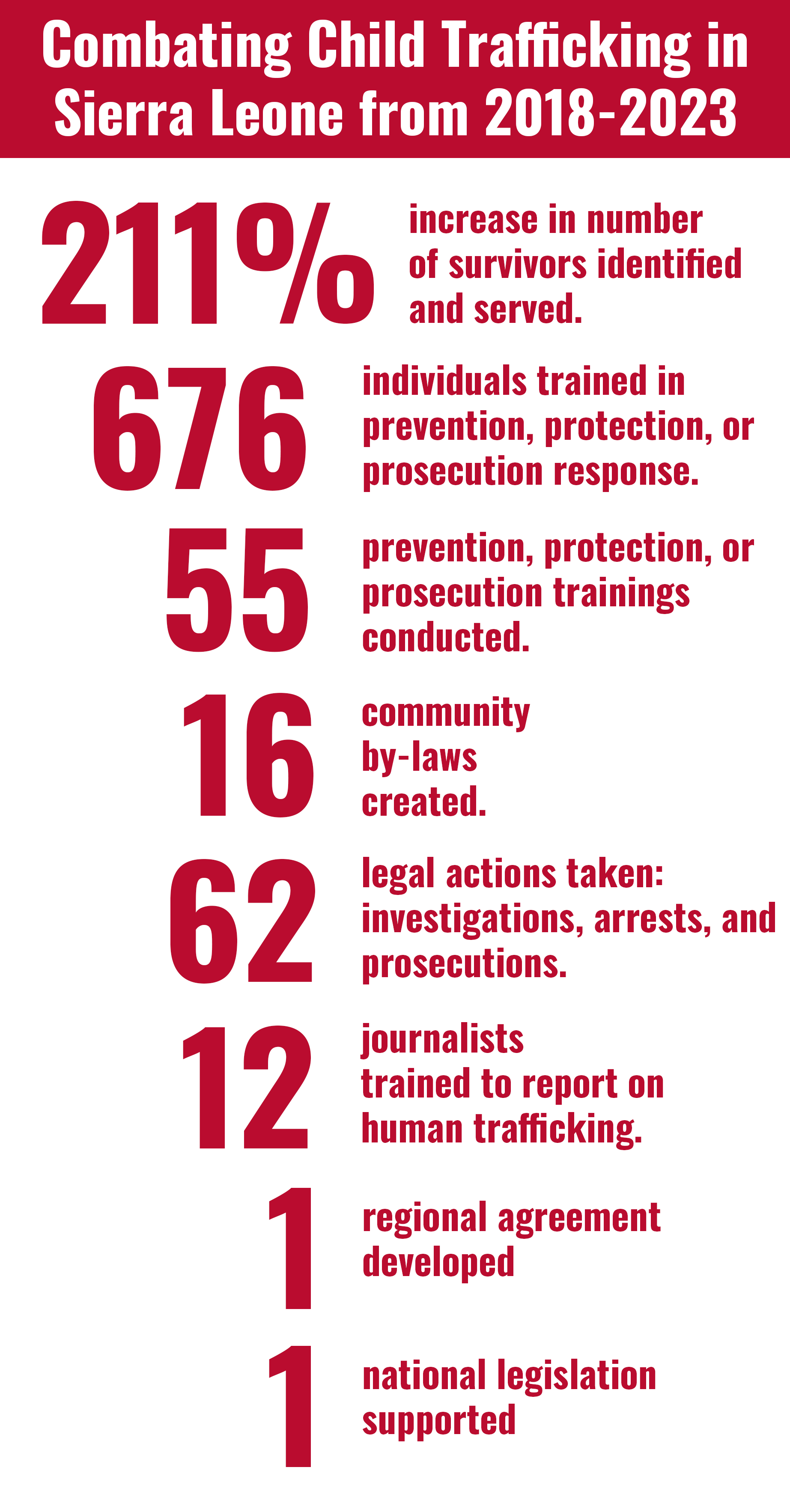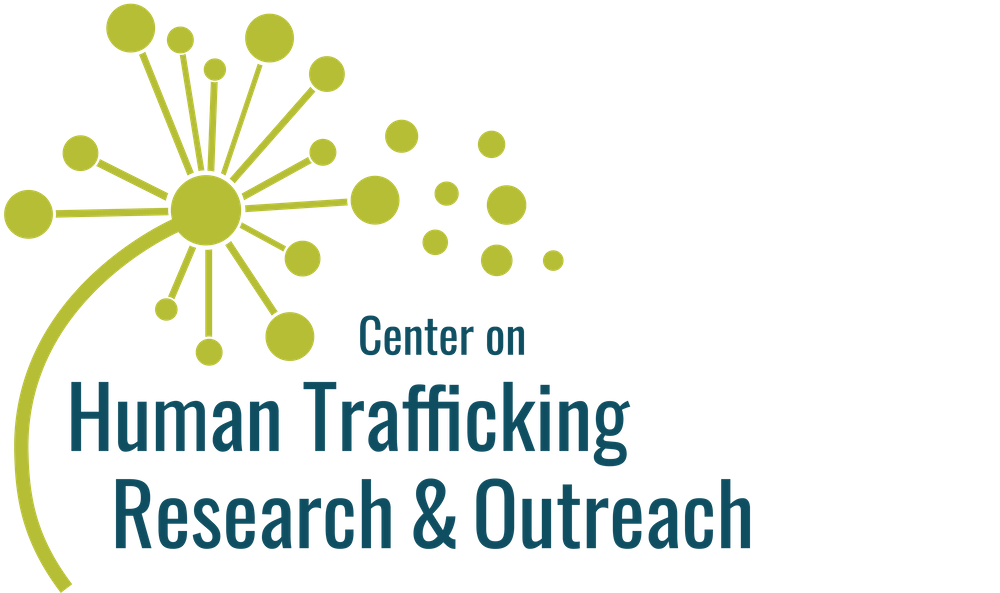Combating Child Trafficking in Sierra Leone

| Child trafficking and child labor are pervasive issues in Sierra Leone that are exacerbated
by poverty and the abuse of cultural traditions. At the close of a five-year project
funded by the U.S. Department of State Office to Monitor and Combat Trafficking in
Persons, CenHTRO is proud to have made a tremendous impact in combating the problem.
Our multi-faceted, collaborative approach has laid the groundwork for sustainable
anti-trafficking responses by local partners. But the work isn’t over. CenHTRO continues to operate programs in Sierra Leone, extended by ongoing federal funding through 2024. |
|
|
Beginning in 2018, CenHTRO sought to understand the prevalence of child trafficking, as well as its key drivers and vulnerabilities, in select hotspot districts—Kailahun, Kenema, and Kono. The prevalence estimation research we produced is the largest-ever study on the topic in Sierra Leone. We then began to develop evidence-based and targeted interventions that would effectively reduce exploitation. Collaborating with implementing partner World Hope International (WHI), our anti-trafficking programs improved outcomes for survivors and built a strong network of committed anti-trafficking actors throughout Sierra Leone society, including government officials, law enforcement, and grassroots community groups. Together, we increased and enhanced services for survivors. Hundreds of officials, social workers, law enforcement, and community members were trained to identify and prevent child trafficking in various capacities. Arrests and prosecutions of child trafficking cases increased. Additionally, we helped local media develop investigative reporting skills to produce impactful stories on human trafficking. CenHTRO and its partners collaborated with law enforcement to increase referrals of
survivors to support services. We partnered with local communities to successfully
reintegrate survivors back into safe environments in their home villages. Our programs
supported the families of survivors with income generating activities that would prevent
future vulnerabilities to re-trafficking. KEY PROGRAM OUTCOMES Anti-Human Trafficking and Migrant Smuggling Act National Conference on Trafficking in Persons Regional Conference of ECOWAS States on Ending |
 |
|
PROTECTING SURVIVORS One of our goals in Sierra Leone was to better protect children by increasing community awareness about how child trafficking was happening in these communities. In turn, trafficking situations would be recognized and referred to relevant agencies and authorities. Additionally, we wanted to ensure that children who’d experienced trafficking were being cared for in ways that put them on a path to healing. So we devised an intervention with WHI to strengthen trauma-informed practices at the shelters where survivors are cared for. We looked at what survivors needed to successfully reintegrate into their home communities—like education or skills training—and we made sure they were ready to go home. In this video, we share the story of Baindu Momoh’s family and how CenHTRO and WHI helped them heal post-trafficking. |
|
|
PREVENTING TRAFFICKING Our research informed us that we needed to engage different levels of government and leadership if we wanted to protect survivors and prevent future cases of trafficking. Traditional leaders called Paramount Chiefs wield tremendous power in Sierra Leone, especially in rural communities where trafficking cases often originate. To have an impact on protecting children, CenHTRO and WHI built meaningful partnerships with Paramount Chiefs and other local officials. In this video, we share how our collaboration had an immediate impact. |
|
 |
|
